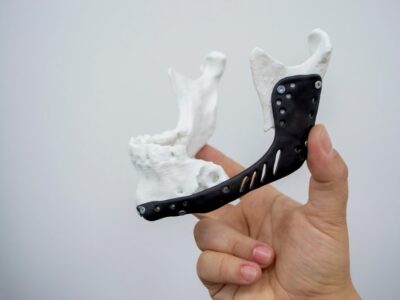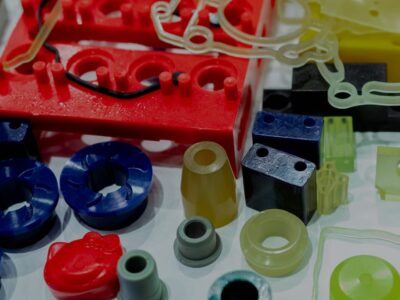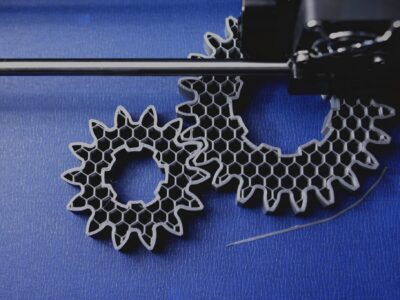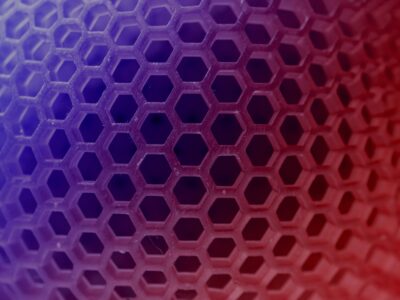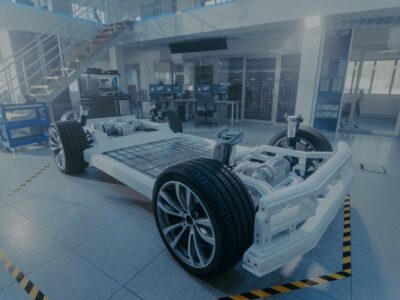Originally published on fastradius.com on July 9, 2020
By 2026, the additive manufacturing market is expected to skyrocket at a compound annual growth rate of 14.4%, totaling $23.33 billion. As industries continue to devote more funds to this growing field and technology evolves, it’s easy to see the promise of additive manufacturing.
Additive manufacturing offers a cost-effective way to create small parts, those with intricate designs or complex geometries, or parts that cannot be built using injection molding. Lead times are minimal and many parts can be produced more quickly than with other methods. Still, market expansion doesn’t necessarily mean that subtractive methods like CNC machining will become less popular.
The manufacturing industry, which is already facing large-scale technological disruption, will likely witness increasing overlap — and possibly even interoperability — between additive and subtractive methods in the production process. The products of the future won’t all be 3D printed, just as they won’t all be made traditionally; they’ll be produced through best-fit methods that may include a combination of additive and subtractive processes.
Getting the best of both worlds
As technology evolves, it’s likely that the market will witness an increasing number of applications that marry both additive and subtractive methods.
The engineers at Curtiss Motorcycle Company, for instance, had a tall order. They wanted to make an electric motorcycle that was bold, powerful, and unlike anything any rider had ever seen. They had the vision, but previous manufacturing partners couldn’t produce a prototype in time that fulfilled both design and quality requirements.
Instead of attempting to meet all of Curtiss’s demands with one manufacturing process, the SyBridge team recommended multi-axis CNC machining for larger parts of the bike and additive manufacturing for smaller, more geometrically complex components. This hybrid approach increased operational efficiency, produced stronger parts, and yielded a better end product. In just 12 days, the “Zeus 8” was born.
Here’s how the benefits of both capabilities — and the limitations of each — can be balanced to find the perfect solution for parts production.
Additive manufacturing, reexamined
While additive manufacturing has generated a lot of buzz — and a lot of capital investment — in the past few decades, it comprises only a sliver of the total manufacturing market. Further, additive methods come with a few key limitations that engineers must consider.
For example, while there are more and more materials available for additive manufacturing, there are nowhere near as many materials available for traditional processes like injection molding and CNC. Technology is improving, but some 3D printing methods don’t produce the strength, heat resistance, or smooth surface finish necessary for critical parts.
And because additive technology is relatively new, fewer materials have gone through the long, rigorous certification processes required to make parts for highly regulated industries. What’s more, the economics of additive don’t always add up for high volume production.
Filling the gaps with subtractive manufacturing
Subtractive manufacturing — like CNC machining — can compensate for some of the limitations posed by additive manufacturing.
Even with industrial-grade machines, 3D printing can sometimes produce parts with non-uniform strength and quality. CNC machining, on the other hand, produces consistently strong parts that can withstand stringent engineering requirements. The process is widely used in the aerospace industry because it allows for the incredibly precise builds necessary to comply with the strict regulations of the Federal Aviation Administration (FAA).
What’s more, when it comes to manufacturing with metals, subtractive manufacturing is usually more efficient. Whereas metal additive materials are still limited and costly, the raw materials needed for subtractive methods are widely available and understood. There’s no shortage of metals for CNC that can create products with tight tolerances and good surface finishes.
All this is not to say that subtractive manufacturing alone will prove sufficient to meet the growing, complex demands of disrupted markets. These manufacturing methods come with their own limitations. First off, startup costs of CNC machining can be as high as those associated with 3D printing, if not higher. Further, from a design standpoint, CNC machining often comes with more limitations than additive. Subtractive manufacturing is also less material-efficient and eco-friendly than additive manufacturing because it inherently creates waste.
Combining capabilities for ultimate success
The pros and cons of both additive and subtractive manufacturing methods make them ideal complements to each other in many applications. As technology and consumer demands evolve, manufacturers will be charged with the task of developing new methods that integrate both additive and subtracting techniques.
Whether you’re building the motorcycle of the future or trying to create a high-quality niche product, it’s important to keep an open mind when it comes to process. Traditional manufacturing methods have a lot to offer engineers and product managers who are looking to build the next best thing. A sophisticated combination of subtractive and additive manufacturing can help manufacturers future-proof their most innovative products.
At SyBridge, we’re passionate about helping companies create the products of the future today, whether that means prototyping a unique part through fused deposition modeling (FDM) or marrying additive and subtractive methods to execute on high volume runs of uniform parts. We can help you create in ways you didn’t think were possible. Contact us today.

